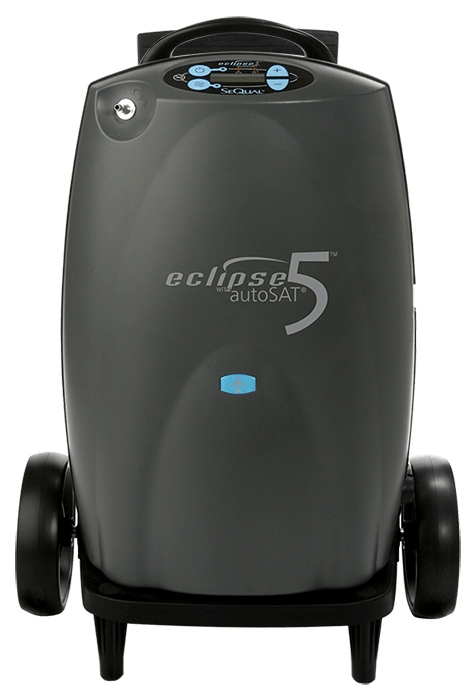
When your parent moves into your home, everyone’s life will change. You now have a new caregiver role in the parent-child relationship. This new role can lead to new stressors, challenges, and questions in your family. Here, we will help you understand some nuances of this big transition for both you and your parent, then offer tips on defining your role as a caregiver. From suggestions for establishing expectations and routines to decreasing stress and conflict, this article aims to help ease the transition to being the caregiver of a parent in your multigenerational household.
Understanding the transition when a parent moves in
When you make the decision to move your parent into your home and begin the caregiver journey, you will likely go through a period of transition. You will take on new roles, responsibilities, and communication styles in the relationship. Your relationship with your parent may change with your growing need for authority and decision-making.
Your parent may become more sensitive to your new position as the caregiver and struggle with shifting from the parental caregiver in the relationship to the recipient of care from the child. During this time of transition and adjustment, parents may feel a loss of autonomy and dignity and struggle with trusting this new dynamic in the parent-child relationship.
The importance of defining your role as a caregiver
As with any new role in your life, taking the time to clearly define this new caregiver role can significantly contribute to a smooth and successful transition. Defining your role when a parent moves into your home offers many benefits, including:
- Establishing clear expectations.
- Decreasing stress and conflict within the household.
- Establishing a routine.
- Accessing additional resources and support.
When your parent moves into your home, many questions about this new dynamic may arise. You may have slowly begun performing certain caregiving tasks with your parent from a distance, but much has changed now that your parent has moved into your home. You might wonder, “How much care does Mom need?” “What can Dad safely do alone?” “How much support can I provide with my other schedule demands?” “Why is Mom short with me when I help her?”
Finding role clarity will help answer these questions and the many others you may have. Following these tips will help you define the role and ease some of the stress that comes with your parent moving into your home.
Assess your parent’s needs
Defining your caregiver role begins with thoroughly understanding when and how your parent needs support. By assessing their physical, emotional, and social needs, you can effectively tailor your role to suit the new living arrangement.
Improving your understanding of your parent’s needs enables you to prioritize tasks efficiently, prevent overlooking essential care requirements, and reduce time spent on unnecessary tasks. This clarity ensures that your caregiving plan is sustainable for you and beneficial for your parent.
With a comprehensive grasp of their needs, you can personalize your caregiving approach, fostering a sense of comfort, safety, and belonging for your parent in your home.
How to assess your parent’s caregiving needs
Conducting an assessment involves open, honest conversations with your parent. You may also consider consulting health care professionals when necessary. Here are some questions to guide these discussions:
- What daily activities do you currently need help with?
- Are there specific health issues or conditions we need to address or monitor regularly?
- How can we best manage your medication schedule?
- What kind of social activities or companionship do you feel you need or want?
- What are your dietary preferences and requirements?
- Are there specific times of day when you feel you need more assistance?
- What are your concerns or fears about this transition?
- Do you have any mobility or accessibility needs?
- How do you feel about having professional caregivers come in for extra support if needed?
- Are there any personal goals or hobbies you would like to pursue or maintain?
When you successfully assess and understand your parent’s needs, you can create an agreement with a comprehensive list of caregiving needs so you can address these needs with a manageable and tailored caregiving plan.
Define your responsibilities
After your parent moves in and you know their needs, clearly defining your responsibilities as a caregiver helps you better understand your new role. By specifying which duties you’ll perform, you establish a structured caregiving environment that enhances both the quality and efficiency of the care provided.
When you clearly know what needs to be done, you can prioritize tasks effectively, fostering a sense of order and reducing uncertainty. This clarity allows you to allocate your time and resources efficiently, balancing caregiving with personal obligations.
To define your caregiving responsibilities, review common caregiving tasks. Consider if others in your household can share duties, and determine what your parent can manage independently. Tasks may include:
- Personal care: Bathing, toileting, getting in and out of bed, dressing, and grooming.
- Medication management: Organizing, administering, and monitoring medications.
- Meal preparation: Planning and cooking meals.
- Household duties: Cleaning, doing laundry, and organizing their personal space in common areas of your home.
- Health monitoring: Keeping track of medical appointments and managing communication with health care providers.
- Transportation: Providing rides to appointments, social activities, and errands.
- Financial management: Budgeting, paying bills, and managing paperwork.
- Emotional support and companionship: Providing social interaction.
- Crisis management: Being prepared for emergencies and knowing emergency contacts and procedures.
As you go through this list and other needs individualized to your family caregiver situation with your parent, create a guide that breaks down all the caregiving duties and responsibilities and who in your family is responsible for each task. Include your parent for whatever tasks they can complete alone or with support.
Set a manageable caregiving schedule
Moving your parent into your home can significantly alter your life and schedule. Establishing a manageable caregiving schedule helps create routine, structure, and eventually a sense of normalcy for everyone in the household.
A well-designed schedule organizes tasks to minimize chaos and stress, ensuring everyone knows what to expect each day. Although creating a schedule might initially seem daunting, it introduces predictability that comforts everyone involved and allows you to allocate your time and energy effectively.
Investing time in a thoughtful schedule enables you to maintain personal balance and care for your own needs, reducing caregiver burnout by preventing last-minute rushes and conflicts.
How to create a caregiving schedule
To create a realistic and supportive schedule, consider the following tips:
- Assess daily needs.
- Prioritize tasks.
- Coordinate with family.
- Include personal time.
- Create a buffer zone for the unexpected.
- Use technology for assistance. Use digital calendars, reminders, and caregiver apps to keep track of schedules and communicate changes easily.
- Perform regular reviews and make adjustments based on changing needs.
- Set boundaries.
- Plan for transitions.
- Incorporate hobbies or activities.
- Include other in-home supports and resources.
Once you have created the caregiving schedule, post it in a visible place. Whether you use an erasable whiteboard, print out a document, or handwrite a schedule, posting it will increase the likelihood that all involved will follow and adhere to it more closely.
You will recognize that your family has successfully acclimated to the caregiving schedule not only when it is consistently followed but also when it has been adapted enough to handle unforeseen circumstances without major disruptions. Your caregiving schedule should help your family go through a smooth daily flow, allow for effective management of caregiving, and give you time to attend to your personal responsibilities.
Final thoughts on caregiving for a parent who has moved in
When a parent moves into your home, defining your caregiver role helps ensure your success in navigating the transition. By assessing needs, establishing responsibilities, and creating a manageable schedule, you enhance the quality of care while maintaining a balance with your personal life.








